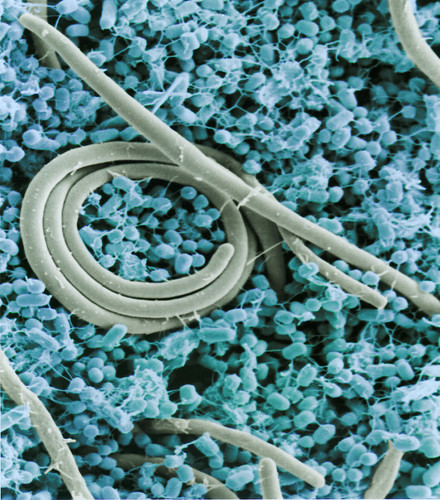
This post is part of the Science Tuesday feature series on the USDA blog. Check back each week as we showcase stories and news from USDA's rich science and research profile.
When it comes to microorganisms that contaminate our foods, you may think it’s a veritable jungle out there—but in fact, in the United States, most of the illnesses, hospitalizations and deaths caused by foodborne pathogens come down to 14 bad players.
Among those 14, a handful cause 90 percent of the billions in annual economic costs associated with foodborne illnesses: Salmonella, Camplyobacter, Listeria monocytogenes, Toxoplasma gondii, and norovirus.
The group is small, but their impact is enormous. The Centers for Disease Control and Prevention estimates that about 48 million illnesses, 128,000 hospitalizations and 3,000 deaths are caused annually in the U.S. by foodborne contamination.
USDA’s Research, Education and Economics (REE) agencies play a crucial role in this fight. As highlighted in USDA’s Office of the Chief Scientist series of white papers on the Department’s research portfolio, REE’s strategy is to advance research, education and outreach in known, high-priority areas of food safety concern.
REE’s Agricultural Research Service (ARS) provides the research infrastructure and expertise to address both short- and long-term needs in food safety, and is able to respond quickly to emerging and critical food safety issues. Although everyone knows and fears Escherichia coli O157:H7, there are lesser known members of the E. coli family that also are of concern to food safety experts. So, ARS scientists have been sorting out "who's who" among the related pathogens, and have developed gene-based polymerase chain reaction (PCR) tests to easily detect half a dozen other E. coli species.
REE agencies are working hard to identify and eliminate the pathogens, reducing the occurrence of foodborne hazards. The National Agricultural Statistics Service collects and analyzes data from agricultural operations and agribusiness to better understand agriculture’s relationship to our food supply and REE’s Economic Research Service assesses potential and real costs of foodborne illness outbreaks and food safety programs throughout the food supply chain.
And the science doesn’t stop within the walls of USDA. With a grant provided by REE’s National Institute of Food and Agriculture, scientists at UC Santa Barbara discovered a version of salmonella which is up to 100 times more potent than other types of the bacteria, and are now trying to develop a vaccine for this bad player.
With the ultimate aim of providing science that informs decisions and policies that contribute to a safe food supply, the REE agencies form an invaluable team to help provide food safety knowledge and solutions benefiting both our nation’s public health and economy.
